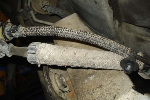thor1701
Well-Known Member
- Joined
- April 24, 2007
- Messages
- 184
- Reaction score
- 1
- City, State
- fresno ca
- Year, Model & Trim Level
- 96 EB
so i have a 96 eb, and as far as i can tell there's nothing wrong, no broken wires no blown fuses, nothing, one day i noticed there is nothing coming out of that subwoofer at all, so other then checking the obvious, fuses wires and whatnot, is there a way to test that power is getting to the amp or other ways to find out if the thing is bad or not?
also i have no idea how to upload pics to this, i took a pic of the head unit and the subwoofer, also this is a jbl system
also i have no idea how to upload pics to this, i took a pic of the head unit and the subwoofer, also this is a jbl system










